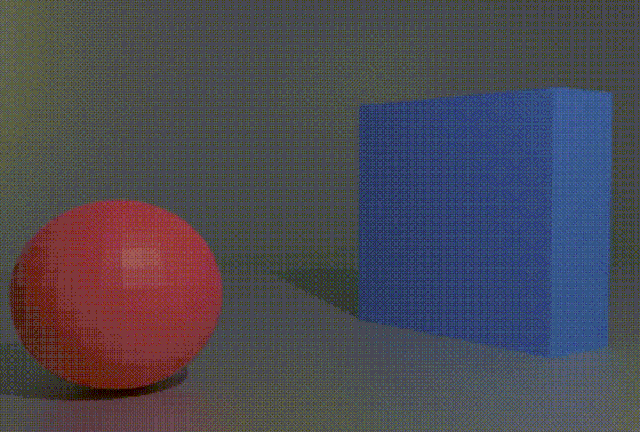Loading AI tools
Instance of two or more bodies physically contacting each other within a short period of time From Wikipedia, the free encyclopedia
In physics, a collision is any event in which two or more bodies exert forces on each other in a relatively short time. Although the most common use of the word collision refers to incidents in which two or more objects collide with great force, the scientific use of the term implies nothing about the magnitude of the force.[1]


Collision is short-duration interaction between two bodies or more than two bodies simultaneously causing change in motion of bodies involved due to internal forces acted between them during this. Collisions involve forces (there is a change in velocity). The magnitude of the velocity difference just before impact is called the closing speed. All collisions conserve momentum. What distinguishes different types of collisions is whether they also conserve kinetic energy of the system before and after the collision. Collisions are of three types:
The degree to which a collision is elastic or inelastic is quantified by the coefficient of restitution, a value that generally ranges between zero and one. A perfectly elastic collision has a coefficient of restitution of one; a perfectly inelastic collision has a coefficient of restitution of zero. The line of impact is the line that is collinear to the common normal of the surfaces that are closest or in contact during impact. This is the line along which internal force of collision acts during impact, and Newton's coefficient of restitution is defined only along this line.
Collisions in ideal gases approach perfectly elastic collisions, as do scattering interactions of sub-atomic particles which are deflected by the electromagnetic force. Some large-scale interactions like the slingshot type gravitational interactions between satellites and planets are almost perfectly elastic.
Collisions play an important role in cue sports. Because the collisions between billiard balls are nearly elastic, and the balls roll on a surface that produces low rolling friction, their behavior is often used to illustrate Newton's laws of motion. After a zero-friction collision of a moving ball with a stationary one of equal mass, the angle between the directions of the two balls is 90 degrees. This is an important fact that professional billiards players take into account,[2] although it assumes the ball is moving without any impact of friction across the table rather than rolling with friction. Consider an elastic collision in two dimensions of any two masses m1 and m2, with respective initial velocities u1 and u2 where u2 = 0, and final velocities V1 and V2. Conservation of momentum gives m1u1 = m1V1 + m2V2. Conservation of energy for an elastic collision gives (1/2)m1|u1|2 = (1/2)m1|V1|2 + (1/2)m2|V2|2. Now consider the case m1 = m2: we obtain u1 = V1 + V2 and |u1|2 = |V1|2 + |V2|2. Taking the dot product of each side of the former equation with itself, |u1|2 = u1•u1 = |V1|2 + |V2|2 + 2V1•V2. Comparing this with the latter equation gives V1•V2 = 0, so they are perpendicular unless V1 is the zero vector (which occurs if and only if the collision is head-on).
In a perfect inelastic collision, i.e., a zero coefficient of restitution, the colliding particles coalesce. It is necessary to consider conservation of momentum:
where v is the final velocity, which is hence given by
The reduction of total kinetic energy is equal to the total kinetic energy before the collision in a center of momentum frame with respect to the system of two particles, because in such a frame the kinetic energy after the collision is zero. In this frame most of the kinetic energy before the collision is that of the particle with the smaller mass. In another frame, in addition to the reduction of kinetic energy there may be a transfer of kinetic energy from one particle to the other; the fact that this depends on the frame shows how relative this is. With time reversed we have the situation of two objects pushed away from each other, e.g. shooting a projectile, or a rocket applying thrust (compare the derivation of the Tsiolkovsky rocket equation).
Collisions of an animal's foot or paw with the underlying substrate are generally termed ground reaction forces. These collisions are inelastic, as kinetic energy is not conserved. An important research topic in prosthetics is quantifying the forces generated during the foot-ground collisions associated with both disabled and non-disabled gait. This quantification typically requires subjects to walk across a force platform (sometimes called a "force plate") as well as detailed kinematic and dynamic (sometimes termed kinetic) analysis.

Hypervelocity is very high velocity, approximately over 3,000 meters per second (11,000 km/h, 6,700 mph, 10,000 ft/s, or Mach 8.8). In particular, hypervelocity is velocity so high that the strength of materials upon impact is very small compared to inertial stresses.[3] Thus, metals and fluids behave alike under hypervelocity impact. An impact under extreme hypervelocity results in vaporization of the impactor and target. For structural metals, hypervelocity is generally considered to be over 2,500 m/s (5,600 mph, 9,000 km/h, 8,200 ft/s, or Mach 7.3). Meteorite craters are also examples of hypervelocity impacts.
Seamless Wikipedia browsing. On steroids.
Every time you click a link to Wikipedia, Wiktionary or Wikiquote in your browser's search results, it will show the modern Wikiwand interface.
Wikiwand extension is a five stars, simple, with minimum permission required to keep your browsing private, safe and transparent.